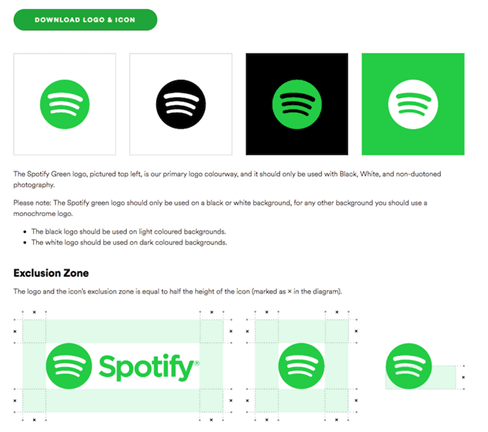Every man is capable of doing one thing well. If he attempts several, he will fail to achieve distinction in any — Plato
Ever heard the saying “Less is More”?
It’s been studied that most brands perform better when they successfully carve out a niche for their selves.
By sticking to certain rules, colors, themes, aesthetics, and brand tone, they become well-known by their audience for that specific element.
Think of it like this — I bet you would recognize the green and red brand design of a typical Gucci bag anywhere! Or the white checkmark for the famous Nike brand.
The reason why they are well known for their content, products, and designs is that they stick to a certain theme/style and incorporate it in every single design!
Want to be known for a certain theme?
You can do that too. All you need is a Brand Style Guide.
This article discusses the definition, importance, and requirements of a brand style guide.
What’s a Brand Style Guide?
A brand style guide (also known as a brand guide or brand guideline) is a rulebook/ Instruction manual that explains how a brand shows itself to the world.
It includes all the elements, looks, and themes that a brand identifies itself with and serves as a reference tool for how a brand should feel, look and sound to the general public.
It guides the brand in terms of production, design, marketing, customer service, and sales, ensuring that they remain consistent with the brand’s overall image.
You definitely wouldn’t want to sound too friendly today and formal the next.
That’s a surefire way to confuse your audience 🙁
You need to ensure that your brand looks and feels the same every day even if its different sections are handled by different people. A brand guide helps you achieve this easily.
The brand guide goes beyond logos and slogans. It’s in the colors, imagery, designs, theme, tone, and even fonts! It covers essentially all you would need to know when communicating your brand.
Why Are Brand Style Guides Important?
Well, other than the fact that they cover your entire brand identity, let’s talk about why brand guidelines are so important.
- When a company creates and carefully follows a brand guide, it ensures that its brand image is consistent wherever it appears. So when your audience sees your content, product, or design aspects, they immediately think, “Yup, that’s them!”.
- It becomes a lot easier to gain your audience’s trust when you consistently show up in the same manner.
- It opens the doors to brand loyalty as more people become familiar with your brand in the long run. (I bet you wouldn’t trust someone who changed the way they act, talk and looks all the time. It’s the same thing here!).
- It ensures you communicate with your audience the same way in a consistent tone.
What You Need To Do Before Creating A Brand Style Guide
You can’t create a brand guide without knowing your brand in its entirety.
A brand guide begins with the brand’s mission statement and goes on to clearly define elements such as looks, colors, fonts, feel, and tone.
Here are a few things you need to know before writing a style guide:
1. Mission Statement
2. Vision Statement
3. Target Audience/ Buyer Persona
4. Brand Personality
5. Core Values
Once you have these checked out and clearly stated, you can then move on to the other aspects of a brand style guide.
A brand style guide should include all the elements necessary to achieve a unified brand identity. These major elements are listed below:
1. Brand story
This is the summary of what your brand is all about. It covers the main principles guiding your brand and why you do what you do. Think of it as a simple summary to give people insight into the heart and soul of the company.
A typical Brand story contains:
- Mission statement — What’s your mission? What do you intend to achieve?
- Vision statement — What’s your company’s vision?
- Buyer Persona — Who do you exist to help? What is your ideal audience like?
- Core values — What principles guide your behavior? What is most dear to your brand?
Brand stories are different for most brands but a typical Brand story combines the mission statement, vision statement, and core values to tell a unique and compelling story.
2. Logo
This section should contain information about the Logo in terms of size, color, and space as well as the “Don’ts” of your logo design.
- Size: Show the minimum and maximum size of the logo.
- Color: Show the different acceptable variations of the logo (with different backgrounds and colors) and state when to use them.
- Space: If there’s a specific amount of white space required in every logo design, clearly state it.
- Don’ts: Include all the mistakes and the various ways you DON’T want your logo to look.
Skype does an excellent job of stating its intentions in terms of logo placement and icon usage. Check out Skype’s brand guide here.
3. Brand Color Palette
A defined color palette will help your brand look and feel consistent. Detail your brand palette and its function for each hue. Most brands stick to 4–5 hue variations or less.
Be sure to include the primary and secondary colors (if applicable) and be sure to clearly state their HEX or RGB color codes to prevent ambiguity.
Spotify’s brand guide clearly shows their logo and background color variations as well as the situations where they should be used.
You can check out their brand style guide here.

4. Typography
This section should cover the primary and secondary brand fonts as well as their sizes, functions, and when to use them. Establish hierarchy in your chosen fonts by arranging them in the following heading sizes:
- Heading Font Style
- Subheading Font Style
- Regular Font Style
- Caption Font Style (If applicable)
Be sure to include the text spacing, line weight, and alignment (clearly state if you want texts aligned to the left, right, or center).
Note — You can also include a subsection for formatting where you include details on how to use hyphens, quotes, bullets, and lists (If applicable).
5. Image Guidelines
Now you can include image guidelines for photos, illustrations, iconography, and artworks that are right for your brand. You can do this in three ways:
- Check out images that have worked best for your brand in the past and use them.
- Seek advice from a photography team/Graphic designer.
- Create a mood board of images or illustrations that resonate with your brand and include them in your brand guide. Be sure to state what it is in the images that make them right and how you would like to recreate them moving forward.
6. Brand Voice
Make sure to specify your brand voice, the tone, and the personality which you want your brand to have. If you would like to sound conversational and witty, then avoid technical jargon and complicated words.
It is recommended to not only clearly state what you would like to sound like, but to also state what you DON’T want to sound like. Describe the qualities and give examples of right and wrong expressions.
You can also include your sentence structures, tone, and how your brand intends to use grammar (including slang, abbreviations, and acronyms).
There you have it! Now you are ready to create your brand guide.
Also Read: Marketing — A Game Of Psychology





